|
4NRX Pharmacy 
|

Guaranteed Lowest Prices on the Internet
The Internet's leading online pharmacy, 4nrx offers a safe, secure, private, and convenient way to get the online prescriptions you need. We are the Internet's leading online pharmacy for FDA-approved medications and offer free secure online medical consultations.
Our pharmacists and physicians are licensed, and our online pharmacy only dispenses FDA-approved prescription medications. We offer competitive pricing, quick shipping, and protection of your privacy through our online pharmacy.
Our online pharmacy provides the most competitive prices and great customer service. We offer shipping at the speed of e-business on all prescriptions and Free Medical Consultations.
|
|
|
Recommended Products
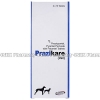
Prazikare (Praziquantel/Pyrantel Pamoate/Febantel) |
Prazikare (Praziquantel/Pyrantel Pamoate/Febantel) is an anti-parasitic medication used to treat and control infections caused by various parasitic worms in dogs. This medication is a combination of ingredients, which target and neutralize different types of worms. More details
Our Price
Prazikare (Praziquantel/Pyrantel Pamoate/Febantel) - 50mg/144mg/150mg (10 Tablets) USD$7.70 ( Buy Now ! )
|
|
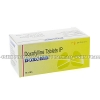
Doxobid (Doxofylline) |
Doxobid (Doxofylline) is used to treat the symptoms of asthma and as well as certain other lung diseases and conditions. It is proven to alleviate symptoms by reducing the urge to cough and helping to increase the airflow to the lungs. More details
Our Price
Doxobid (Doxofylline) - 400mg (10 Tablets) USD$8.40 ( Buy Now ! )
|
|
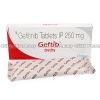
Geftib (Gefitinib) |
Geftib (Gefitinib) is used in the treatment of lung cancer. It helps to treat non-small-cell lung cancer by blocking the action of an enzyme known as tyrosine kinase. This enzyme is believed to be needed by the cancer cells to multiply, so by interfering with its function the medication helps to prevent the growth of cancer cells and slow down their ability to spread throughout the lungs and beyond. More details
Our Price
Geftib (Gefitinib) - 250mg (30 Tablets) USD$449.00 ( Free Shipping ! )
|
|
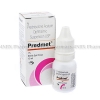
Predmet Opthalmic (Prednisolone Acetate) |
Predmet Opthalmic (Prednisolone Acetate) is a corticosteroid prescribed to treat eye conditions caused by inflammation or injury. It is commonly prescribed to treat the symptoms of allergic conjunctivitis, iritis, keratitis, and conjunctivitis. More details
Our Price
Predmet Opthalmic (Prednisolone Acetate) - 10mg (10ml) USD$7.20 ( Buy Now ! )
|
|
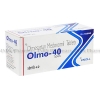
Olmo (Olmesartan Medoxomil) |
Olmo-40 (Olmesartan Medoxomil) is commonly used to treat hypertension (high blood pressure). It is an anti-hypertensive drug, and an Angiotensin II receptor antagonist which may be used on its own or combined with other medication as determined by your physician. More details
Our Price
Olmo-40 (Olmesartan Medoxomil) - 40mg (10 Tablets) USD$6.45 ( Buy Now ! )
|
|
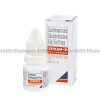
Zoxan-D Eye/Ear Drops (Ciprofloxacin HCL/Dexamethasone) |
Zoxan D (Ciprofloxacin HCL/Dexamethasone) is used to treat bacterial infections of the eyes or ears. It is a quinolone antibiotic and anti-inflammatory corticosteroid which fights bacterial infections, and alleviates related symptoms, such as inflammation, swelling, redness, irritation, and itchiness. More details
Our Price
Zoxan-D Eye/Ear Drops (Ciprofloxacin HCL/Dexamethasone) - 0.3%/0.1% (5mL) USD$3.90 ( Buy Now ! )
|
|
|
|



